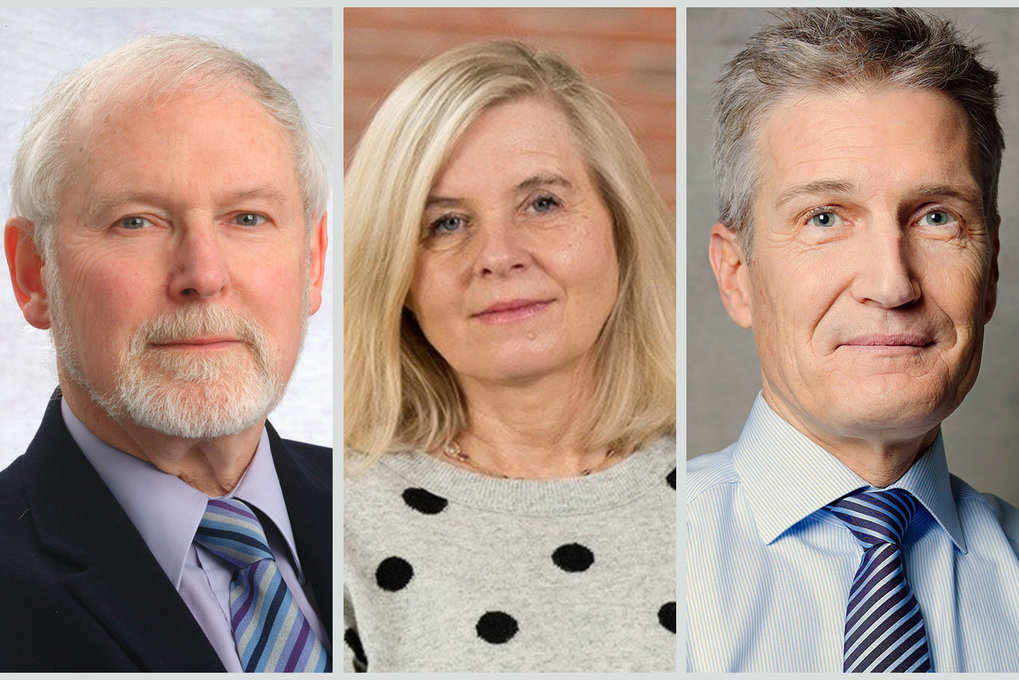Researchers honoured for their findings on brain cleansing and its importance in dementia
Alzheimer’s disease is the most common form of dementia and affects at least 50 million people worldwide. The progressive death of nerve cells is associated with the deposition of protein aggregations known as amyloid plaques. With increasing age, such aggregations are more difficult to dissolve and remove from the brain. This year, the Gertrud Reemtsma Foundation honours Roy Weller, Maiken Nedergaard, and Mathias Jucker, three neuroscientists who have investigated the removal of waste products from the brain. The researchers’ findings offer new approaches for treatments and preventive measures for Alzheimer’s and other neurodegenerative diseases. The International Prize for Translational Neuroscience of the Gertrud Reemtsma Foundation (previously known as the K.J. Zülch Prize) valued at € 60,000 will be awarded on 10 September 2020 in Cologne.

Cellular waste products are transported into the blood via lymph vessels and nodes, degraded in the liver, and recycled or excreted in the urine. An exception to this is the brain, in which there are no conventional lymph vessels. The brain is nevertheless highly active and consumes around one quarter of the body’s total energy. This enormous metabolic output also produces a considerable amount of waste. If they are not properly removed, the waste products deposit in the brain. This can lead to the death of nerve cells and possibly dementia.
In Alzheimer’s disease, the amyloid b protein (Ab) is deposited as plaques around nerve cells that suffer damage consequently. In our younger years, such amyloid plaques are only rarely present in our brains. But as we age, these proteins are less effectively removed. Roy Weller from the University of Southampton wanted to find out how waste products are removed from the brain – and why this often fails with increasing age. His experiments have shown that waste products from the brain are drained via the walls of arteries. In this process, the brain fluid and the waste products it contains flow to the arteries. From there they are transported to the lymph nodes in the neck by the wave-like contraction of the smooth muscle cells in the walls of the arteries. The extremely narrow pathways of this unique system allow proteins and metabolic products to be removed. However, the pathways are too narrow to allow the traffic of immune cells from the brain to lymph nodes. This has a significant effect on immune reactions in the brain.
Because the arteries lose smooth muscle cells over time and stiffen, this drainage becomes less efficient as we get older. Insoluble Ab protein can block the narrow drainage pathways and thus further impair its removal. Strengthening of smooth muscle cell contractions and the dissolution of the Ab proteins to ensure the outflow of Ab could act as the starting point for therapies for the prevention and treatment of Alzheimer’s disease.
Role of glia cells
Maiken Nedergaard from the Medical Centre of the University of Rochester and University of Copenhagen has researched the major supportive glial cell type in neuronal diseases, the so-called astrocytes. They surround blood vessel with their processes. This create donut-shaped perivascular tunnels that enables cerebrospinal fluid to flow into brain and literally flush waste products, such as Ab, out of the brain.
Maiken Nedergaard showed that astrocytes play an important role in distributing fluid in the brain. The transport of Ab is enabled by the dense expression of the water channel, AQP4. Due to the importance of this predominant glial cell type in the brain’s plumping system, she entitled the brain fluid transport the ´Glia-lymphatic’ or the ´glymphatic system´. In essence, brain waste products are transported along the blood vessels to the lymph nodes.
According to Nedergaard, the glymphatic system is mainly active and removing waste products during sleep. As we sleep, astrocytes shrink and allow larger intercellular spaces into which cerebral fluid can penetrate along the blood vessels. From there, Ab and other waste products can be removed. These findings could be used to develop new approaches to the prevention and treatment of Alzheimer’s disease.
Biomarkers for Alzheimer disease
Mathias Jucker from the Hertie Institute for Clinical Brain Research and the German Center for Neurodegenerative Diseases in Tübingen uses the fluids that cleanse the brain to diagnose neurodegenerative diseases. Jucker identified biomarkers for neurodegeneration in the blood and cerebral fluid of genetically modified mice. These results can be transferred to clinical application in humans. For example, in the cerebral fluid of mice that develop Ab-plaques like Alzheimer’s patients, he discovered molecules with which the progression of Alzheimer’s disease can be predicted early on.
Jucker’s studies also suggest that the clearing of Ab depends on the proper folding of the protein. As is the case with prions, misfolded Ab trigger the misfolding of other Ab proteins in a kind of self-reinforcing domino effect. Misfolded proteins can then no longer be cleared. By the time the first neurological symptoms appear, the brain has already been severely damaged because so many amyloid plaques have formed. Many therapies are therefore no longer effective at this time and a preventive therapy is even more important.
The prize winners
Roy O Weller studied neuropathology at Guy’s Hospital Medical School in London, where he qualified in Medicine in 1961 and received his PhD in 1967. He then went on to complete a post-doctoral fellowship at the Albert Einstein College of Medicine in New York. In 1978, he became Professor of Neuropathology at the University Hospital in Southampton. He has been a Professor Emeritus since 2003.
Maiken Nedergaard received her MD from the University of Copenhagen in 1983. In 1988, she received her PhD. In 1987, she joined Cornell University Medical College as a post-doctoral fellow. In 1994, she became Professor of Cell Biology at New York Medical College. Since 2003, she has been Professor of Neurosurgery, Neurology, and Neuroscience at the University of Rochester. Since 2014, she has also been Professor of Glial Cell Biology at the University of Copenhagen and Co-Director of the “Center for Translational Neuromedicine”.
Mathias Jucker received his PhD from ETH Zurich in 1988. He then completed a post-doctoral fellow-ship at the National Institute on Aging in the US, before joining the University of Basel, where he qualified as a professor in experimental medicine in 1999. Since 2003, he has been Professor of Cell biology of neurological diseases and Director at the Hertie Institute for Clinical Brain Research. In addition, he is group leader at the German Center for Neurodegenerative Diseases, Tübingen site.







